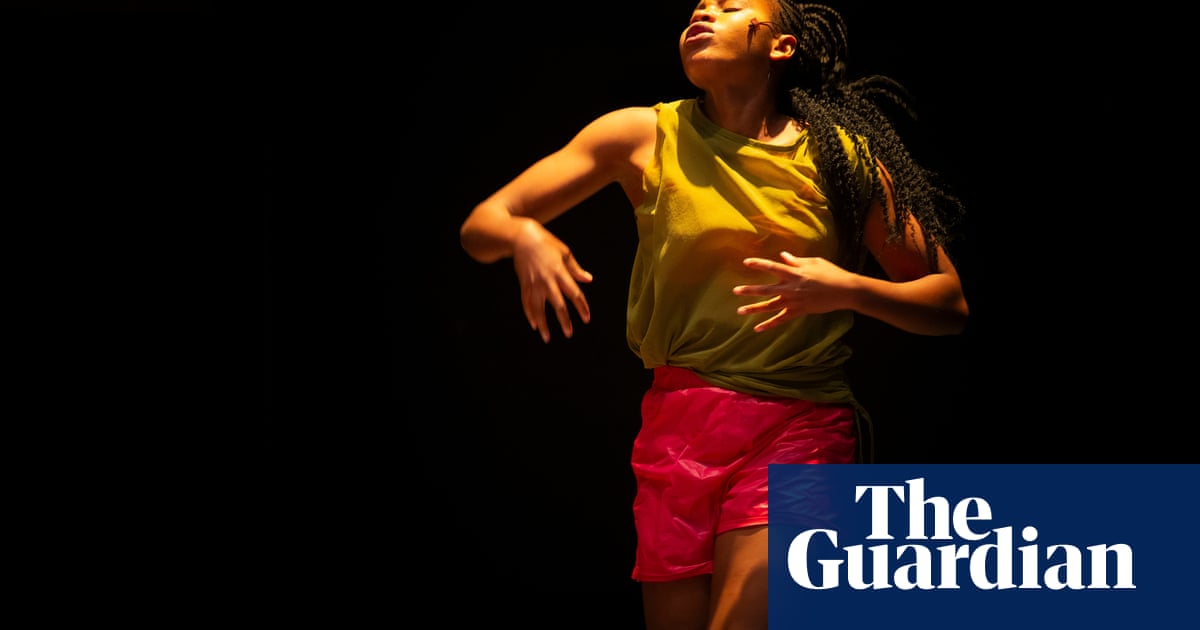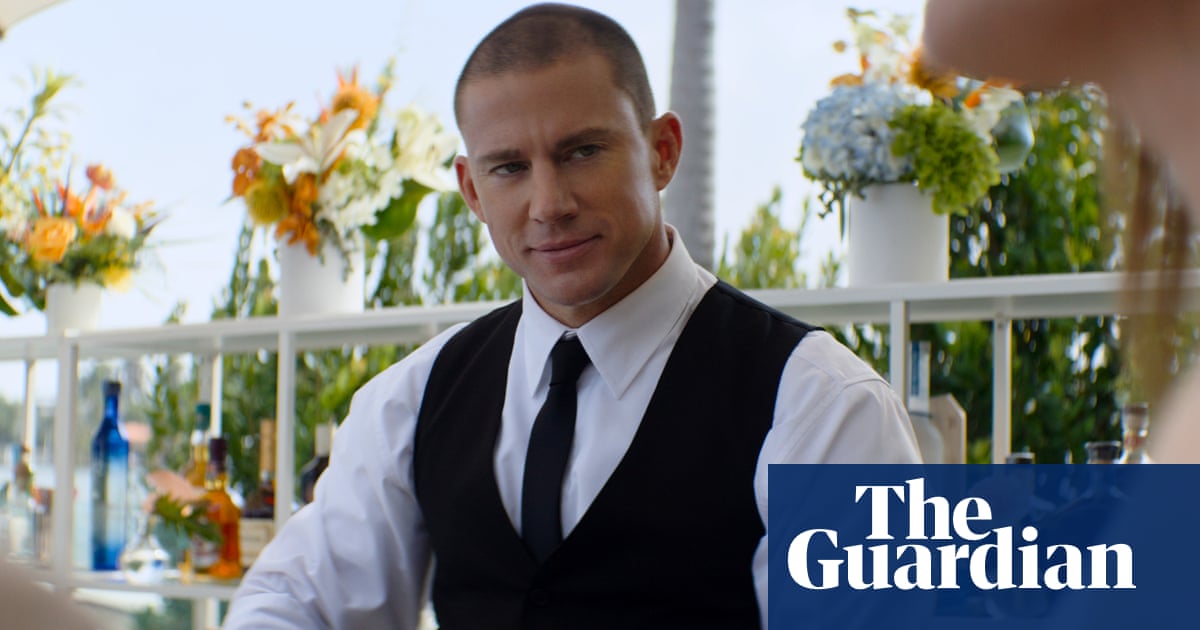
his morning, like most mornings, Mike Dibb is sitting in his conservatory. “It’s where I spend many, many, many hours,” he says. “And it’s very nice, because I look out into a little garden.” There is a desk, a painting by an old friend, and a vine that twists up the back wall. He’s speaking via Zoom from west London and it feels strange to see this documentary-maker on screen. Over the course of more than five decades, Dibb has rarely ventured in front of the camera. Instead, he’s the voice off-screen, the steady hand steering the story.
A retrospective of Dibb’s work is about to begin online, courtesy of the Whitechapel Gallery in London. It encompasses portraits of Keith Jarrett, Federico García Lorca, Miles Davis, CLR James, Barbara Thompson, Roger Deakin and Edward Said. There are studies of place: Chicago through the eyes of Studs Terkel; Cuba, via its music and dance; Ireland, through spoken word and song. And there are his more discursive works: the 1982 series Fields of Play, which looked at human notions of play, from humour to gambling to war. And of course, it features Ways of Seeing, Dibb’s 1072 landmark collaboration with the writer John Berger, which offered a new perspective on visual imagery, from the female nude and the male gaze, to oil paint, advertising, and the theories of Walter Benjamin.
Dibb’s route into film-making began in Filey, on the Yorkshire coast, where his father, a GP and keen cinemagoer, kept notes on films he had seen: brief reviews accompanied by a star rating. Filey, Dibb points out, was the location of AS Byatt’s novel Possession. “This book was set in the landscape of my childhood!” he says. “The consummation of this great romantic relationship happened in Filey. And I thought, ‘Well, nobody has sex in Filey.’” Later, he would profile Byatt. “We filmed the very space I grew up in but with her inhabiting it, which was nice. So it was a journey through both of our childhoods as well as a film about her.”
Dibb studied English and Spanish at Trinity College, Dublin, but was distracted by the screen, spending the years of his degree immersed in the delights of US cinema. But the time was not wholly squandered: years later, making a film about Don Quixote, he enlisted his former Spanish professor as a consultant. “When I finished the film, I made a VHS of it and sent him a copy saying, ‘Here’s the only essay of mine you’ve ever liked!’”
To revisit Dibb’s work is to be reminded how much documentary has changed. While he delights in the technology “that has made it much easier for people to make films”, there is a sorrow that there is no longer the space on network TV for in-depth work. “I’ve been very lucky,” he says. “I lived through an extraordinary period of television. There was the move to colour, BBC Two arrived and Channel 4. It was the expansion of television, with a tremendous space for cultural programmes, but also documentaries.”
The films today are predominantly presenter-led, he says. “So Lucy Worsley will turn up all the time, certain cultural historians who do this, that and the other.” With the notable exception of Berger, Dibb’s films have rarely placed a presenter front and centre. Rather, he has preferred to let the subject remain the focus. “I’ve never been in them in the way of Louis Theroux,” he says. “But I’m always there, asking questions.”
There is a fluidity to Dibb’s work – the shot holds, the camera rarely drops, and his films have the rhythm of an easy, ongoing conversation. The aim, he says, is “to make the camera seem as if it’s a listening eye, so it’s responding to the space it’s in, not jumping around. You are just slowly drifting from one thing to another.”
Often he has found it best to interview people in the home or workplace, or when they are engaged in a task, rather than having a formal conversation in a TV studio. “Filming on a production line in Chicago where everybody’s making Space Invaders, or women who are making tennis balls for Wimbledon – once you talk to people about their lives and what they like doing, they open up.”
Dibb describes his early work as “stiffer” – a product of his lack of confidence when working with cameramen often twice his age. “If you look at a little 15-minute film I did with Alan Bennett at the Leeds City Art Gallery, it’s terribly conventionally done. But it was all right, because Alan is Alan.” He smiles. “There was a lovely moment at the end. Referring to a painting, he said, ‘And this is quite simply a masterpiece.’ And I said, ‘Alan, wouldn’t you like to elaborate slightly on why you think it’s a masterpiece?’ And he said, ‘Who do you think I am? Kenneth bloody Clark?’ It’s staying as I wrote it!’”
Conversation with Dibb is full of such anecdotes, from an account of visiting David Hockney in Los Angeles and being given an exclusive unveiling of his opera designs, to the trials of making a documentary about improvisational jazz with Keith Jarrett. He cannot imagine “a more difficult subject about a more difficult person”.
Dibb has grown accustomed to seeing different sides of his subjects. He has made it something of a mission to show the limber side of many academics. “I love the idea of an academic not being an academic,” he says. “I knew Stuart Hall very well, one of the most interesting and charismatic people to talk to. But he writes very conventionally, in an academic mode. When you’re with him, with a twinkle in his eye and his wonderful gift for language, all the things come across with a vividness which is very different.”
It is, however, John Berger with whom Dibb will forever be linked. “John is the one writer who stayed with me right through my life,” he says. He first encountered Berger’s writing as a teenager, newly interested in art. “I loved the way he wrote. The way he used language was very simple. His sentences were never long. I began to cut out his articles.”
He continues: “It’s quite rare to later meet someone who’s been that influential. But I met John in the 60s, in London for lunch, because he did a wonderful translation of Brecht’s poems for the theatre.” A proposed project on Brecht never happened, but instead came a BBC commission, Ways of Seeing: “Four half-hour film on topics of his choice. And, because we knew each other, I was asked to be a researcher, with the possibility of directing one of the films.” Such was their bond, Dibb was soon directing all four. “So we were able to develop that series on our own with no one hanging over us. It was a journey of discovery for both of us.”
Dibb continued to work with Berger for many years, with films including Pig Earth and Parting Shots from Animals. “Although I filmed conversations with John sometimes, I never used them. There was something about the way he distilled his thought as he wrote that was always much better than his conversation. Not that he wasn’t wonderful to talk to, but it was always full of silences.”
Dibb is now 80, but still at work. He is in the final stages of Painted With My Hair, a portrait of a US prisoner named Donny Johnson, who was in solitary confinement for 24 years. “He felt this tremendous compulsion to become a painter,” Dibb says. “But he’s not allowed painting materials, so he has to make brushes from his own hair and use the colour from M&M’s and Skittles. The only thing he can paint on is the backs of postcards.” The film will be partnered by a touring exhibition, The Dungeon Art of Donny Johnson.
“I don’t think I’ll ever quite stop,” says Dibb. “My films are driven by curiosity. I find people I’m interested in. It doesn’t matter who they are. I’m interested in an awful lot. I don’t know a lot – but I love finding out.”












